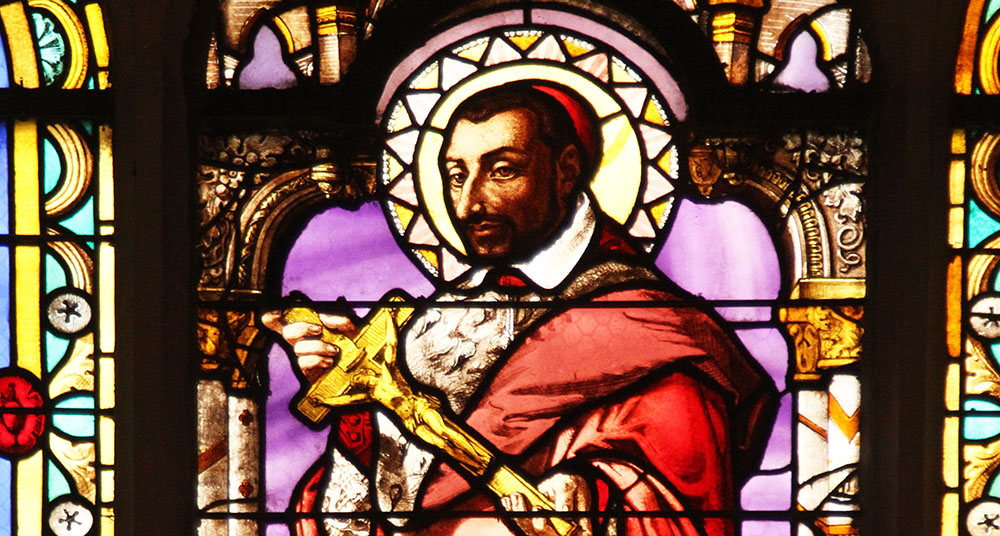‘Be sure that you first preach by the way you live.’
From an early age, St. Charles Borromeo exhibited a deep interior life, which served him well when he was appointed to high-ranking ecclesial positions during the pontificate of his uncle, Pope Pius IV. And the Church benefitted from Charles’ great intellect and virtue by the many structural reforms he prioritized during his service to the Church.
At his time, nepotism was a common practice in both society and in ecclesial life, lending itself to corruption because those in power favored relatives, especially by giving them notable positions. Before he was even ordained to major orders, Charles’ papal uncle named him a cardinal. Soon after, the pope drafted him into Vatican service, where he was given a host of assignments, including a variety of high diplomatic posts and patronage of various ecclesial organizations. Not least, he was given administration of the Archdiocese of Milan despite not yet holding episcopal office.
In his high-ranking work, Charles did not initially set out to bring major changes to the papal court, although he often found it spiritually empty. He managed to remain unattached to the excesses around him. Charles was keenly aware of his inexperience and was tempted to flee to the monastery. At the same time, he was concerned about the Church in Milan, which had been without a resident shepherd for nearly 80 years. But he came to trust in God’s will and focused more intently on finding a way to escape his Vatican roles and get to Milan.
Before that was possible, however, Charles found himself involved in reopening the Council of Trent, which had been suspended. The task energized him, and he took a key role in the formulation of the council’s catechism, as well as various liturgical changes. He also served as the brains behind many of the reform council’s decrees, which shaped doctrine and discipline.
In 1563, Charles resigned his position as head of his family, meaning he was not responsible to produce offspring. Only then was he ordained to the priesthood and episcopacy. With his work at the council behind him, Charles again turned his attention to his flock in Milan.
Pius IV allowed Charles to visit Milan for a short time, where he held a provincial council and focused attention on seminary reforms and proper celebration of the liturgy. Upon his return to Rome, he arrived to find his papal uncle on his deathbed. Pius’ demise allowed Charles to successfully earn Pope Pius V’s approval to return to Milan.
Finally taking residence in Milan in 1566, Charles learned more detail about how much work was ahead of him: People were very loose in their practice of the Faith. Mass attendance was low, clergy were unmotivated and uneducated, and corruption and immorality were widespread.
Through grounded prayer and perseverance, Charles worked to reform his archdiocese. He led a simple life there and generously shared the sizable income he earned. Ever attentive to the need for a reformed clergy, Charles built seminaries for their formation. He also worked to ensure that the laity, especially children, were well instructed in the Faith and established the Confraternity of Christian Doctrine. Some of his reforms were met with strong opposition, and there was even an attempt on his life.
St. Charles laid down his life for his flock whenever disaster struck, such as in famine and plague. He personally oversaw recovery efforts and ministered to the dying, buried the dead and absorbed large debts to alleviate the suffering. On his way home from a retreat in 1584, Charles fell ill and died when he was only 46 years old. His feast is Nov. 4.
Michael R. Heinlein is editor of Simply Catholic and a graduate of The Catholic University of America. He writes from Indiana. Taken from “Saints in Times of Crisis” booklet from Our Sunday Visitor.

